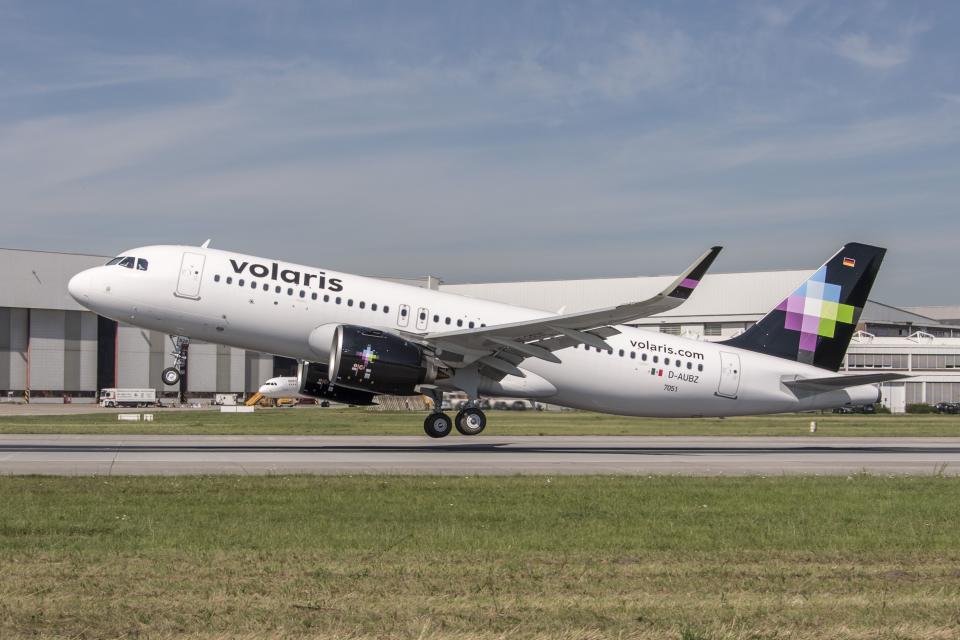Volaris Stock Is Primed to Rebound After Strong Earnings
A few years ago, Mexican budget airline Volaris (NYSE: VLRS) was flying high, as low fuel costs and rising demand for air travel in Mexico were driving strong profit growth. However, the past few years have been rough for Volaris because of overcapacity in many of its markets and a rebound in fuel costs.
Fortunately, Volaris' rock-bottom cost structure has helped it weather the storm. Now, higher-cost competitors are finally being forced to pull back on growth, boosting unit revenue at Volaris. That enabled the carrier to report strong first-quarter results last Friday.
Volaris starts 2019 on a better foot
Last year, Volaris got off to a dreadful start. A combination of rising fuel costs and a sharp decline in revenue per available seat mile (RASM) due to industry overcapacity caused Volaris to post a negative 15.5% operating margin in Q1 2018.
However, RASM (as measured in pesos) rebounded last quarter, surging 9%. That represented the carrier's second consecutive quarter of high-single-digit RASM growth, following a long string of RASM declines. Volaris' average fuel price rose another 14.8% due to country-specific factors, but the airline was able to offset this cost pressure with better fuel efficiency and a 5.8% reduction in nonfuel unit costs. All told, unit costs decreased 0.7% year over year.
The net result was that Volaris' operating margin improved by nearly 10 percentage points year over year. Including the effect of a new accounting standard -- under which the carrier would have reported a negative 9.3% operating margin in Q1 2018 -- Volaris posted a slight operating profit last quarter, with a 0.4% margin. Analysts had been expecting another loss.

Volaris swung to a slight operating profit last quarter. Image source: Volaris.
This may not seem like an especially impressive result. However, the first quarter is by far the weakest period seasonally for most airlines, including Volaris. Additionally, the timing of Easter -- which shifted into late April this year -- diminished Volaris' RASM growth last quarter.
Rivals are pulling back
Volaris' revenue momentum is likely to continue in the quarters ahead, as rising fuel prices and relatively low fare levels are forcing its competitors to slow their growth.
Aeromexico, Volaris' top rival, reported last month that its capacity fell 3% year over year in the first quarter (including a modest impact from the Boeing 737 MAX grounding). Even so, its RASM rose just 3.6%, while unit costs increased at a higher rate. This caused Aeromexico to post a negative 2.3% operating margin last quarter, compared to a slight operating profit a year earlier.
Interjet, the third-largest airline in Mexico, faces even bigger troubles. In recent months, more than a dozen of its Russia-built Sukhoi Superjets have been grounded due to maintenance issues. Additionally, the carrier has been bleeding cash after its operating margin plunged deep into negative territory last year. The airline's weak financial position has caused labor tensions to rise, culminating in dozens of flight cancellations in late March. Interjet hasn't reported its Q1 results yet, but there's no reason to expect improvement.
With weak profitability likely to force Aeromexico and Interjet to limit their growth for the foreseeable future, Volaris should be able to continue gaining market share and growing RASM.
The Q2 outlook is solid
Volaris is likely to post strong margin expansion again in the second quarter, despite ongoing fuel price pressure. Management expects the company's adjusted earnings before interest, taxes, depreciation, amortization, and rent (EBITDAR) margin to reach a range of 23% to 24%, up from 17.3% a year earlier (adjusted for the new accounting standard). Furthermore, this outlook could be conservative, given that Volaris beat its EBITDAR margin guidance last quarter.
This positions Volaris to be solidly profitable in the first half of 2019, paving the way for strong margins in the seasonally stronger back half of the year.
With Volaris stock trading for about 0.5 times the company's projected 2019 revenue, investors appear to be underestimating the company's chances of a margin recovery and long-term growth. Volaris stock is definitely on the risky side due to the boom-bust nature of the Mexican aviation industry today, but it has a ton of upside for patient long-term investors.
More From The Motley Fool
Adam Levine-Weinberg owns shares of Volaris. The Motley Fool has no position in any of the stocks mentioned. The Motley Fool has a disclosure policy.
